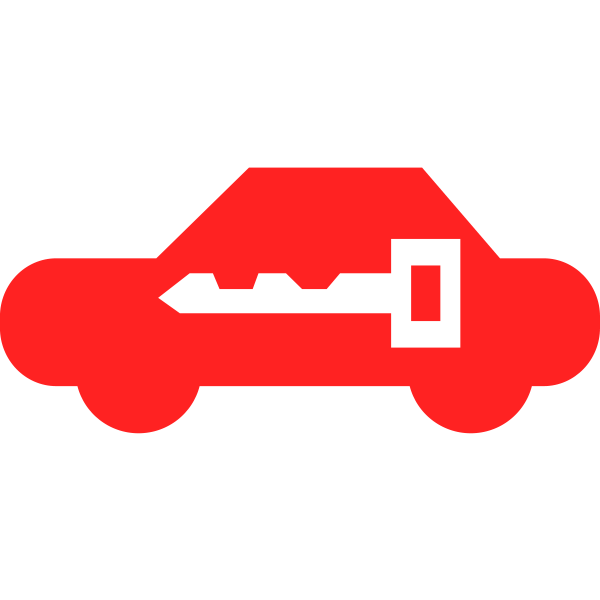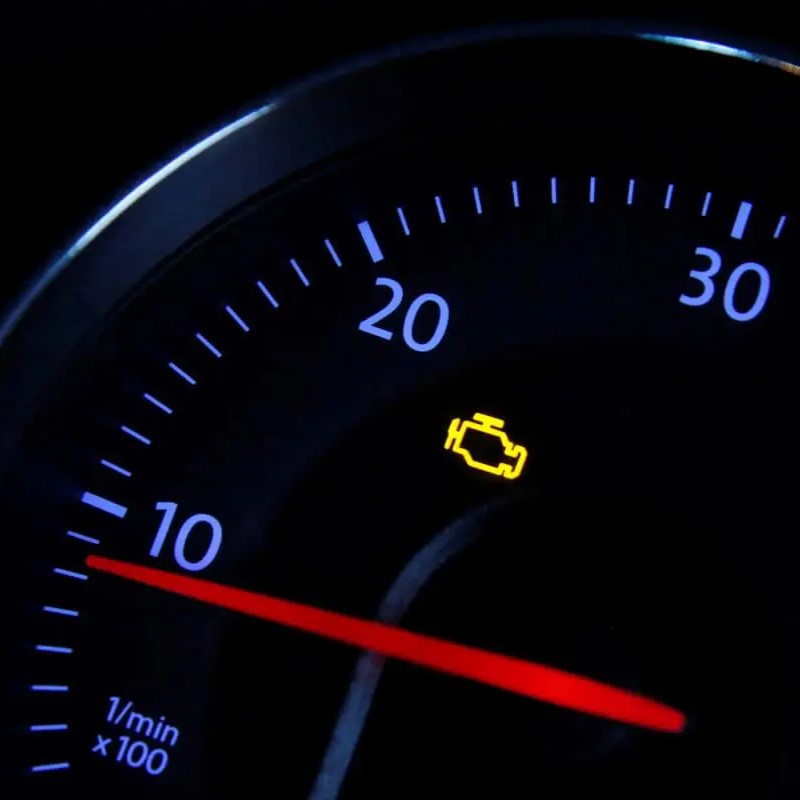It can be unnerving when your car starts jerking unexpectedly, especially if it’s accompanied by the illumination of the traction control light on your dashboard. This combination of symptoms indicates an underlying issue with your vehicle’s traction control system or a related component. Let’s delve into the potential causes, how to diagnose the problem, and explore solutions to get your car running smoothly again.
What is Traction Control and How Does it Work?
Traction control is a safety feature that helps maintain control of your car during slippery or low-traction conditions. It works by constantly monitoring wheel speeds using wheel speed sensors. If one wheel spins faster than the others, indicating a loss of traction, the system intervenes by reducing engine power or applying individual brakes to regain control. This can manifest as a jerking sensation or a slight loss of acceleration.

Understanding the Jerking and Traction Control Light:
There are several reasons why your car might be jerking and the traction control light might be on. Here are some common culprits:
- Wheel Speed Sensor Issues: Faulty or dirty wheel speed sensors can send inaccurate signals to the traction control system, triggering unnecessary interventions.
- Engine Misfires: Engine misfires can cause erratic power delivery, mimicking a loss of traction and prompting the traction control to kick in. Misfires can be caused by faulty spark plugs, ignition coils, or problems with the fuel system.
- Faulty ABS Module: The anti-lock braking system (ABS) and traction control often share components. A malfunctioning ABS module can disrupt the traction control system, leading to the warning light and jerking.
- Tire Problems: Uneven tire wear, incorrect tire pressure, or damaged tires can all affect traction and trigger the traction control system.
- Transmission Issues: In some cases, a slipping transmission can cause jerking and disrupt the traction control system’s ability to maintain proper power delivery.

Diagnosing the Problem:
If you’re experiencing jerking and the traction control light is on, here are some steps to diagnose the problem:
- Visual Inspection: Start with a basic visual inspection of your tires. Check for uneven wear, proper inflation, and any signs of damage.
- Consult the Owner’s Manual: Your car’s owner’s manual might offer specific troubleshooting steps related to the traction control light and jerking symptoms.
- OBD-II Scanner: Consider using an OBD-II scanner, a tool that can read diagnostic trouble codes stored by your car’s computer. These codes can point towards the source of the problem.

Finding a Fix:
Once you’ve identified the potential cause, you can address the issue accordingly:
- Wheel Speed Sensor: If the culprit is a faulty wheel speed sensor, a mechanic can diagnose which sensor is malfunctioning and replace it.
- Engine Misfires: Addressing engine misfires might involve replacing faulty spark plugs, ignition coils, or other components within the fuel system. Consulting a mechanic is recommended for proper diagnosis and repair.
- ABS Module: A malfunctioning ABS module usually requires professional attention at a repair shop.
- Tire Problems: Ensure your tires are properly inflated, replace worn-out tires, and address any damage promptly.
Important Safety Precautions:
While a car jerking with the traction control light on might not render your car completely undrivable, it’s crucial to prioritize safety. Here’s what to do:
- Drive with Caution: If you must drive the car, maintain a safe speed and avoid aggressive maneuvers.
- Schedule a Repair Appointment: Don’t delay scheduling an appointment with a qualified mechanic to diagnose and fix the underlying issue.

Preventing Future Issues:
Here are some preventive measures to minimize the risk of encountering traction control light and jerking issues:
- Regular Maintenance: Sticking to your car’s recommended maintenance schedule helps ensure everything is functioning optimally.
- Tire Care: Regularly check tire pressure and wear, and replace tires as needed.
- Quality Parts: When replacing components, opt for high-quality parts to ensure proper performance.
Regular maintenance recommendations to prevent traction control issues
While traction control systems are fantastic safety features, they can’t prevent every issue. Luckily, some simple yet effective maintenance routines can significantly reduce the chances of encountering a jerking car and an illuminated traction control light. Here are some key recommendations:
-
Tire TLC: Tires are the foundation of your car’s grip, and neglecting them is a recipe for traction control woes. Regularly check your tire pressure, aiming for the recommended level specified in your owner’s manual (not just what’s printed on the tire sidewall). Uneven pressure can cause a wheel to spin faster, triggering the system unnecessarily. Perform visual inspections for uneven wear and any signs of damage like bulges or cracks. Maintaining proper tread depth is crucial, as worn-out tires have less grip, increasing the likelihood of traction loss. Regularly rotate your tires according to the manufacturer’s recommendations to promote even wear.
-
Sticking to the Schedule: Following your car’s recommended maintenance schedule is paramount. This schedule outlines specific intervals for servicing various components that can impact traction control. For example, routine spark plug replacements ensure proper engine performance, minimizing the risk of misfires that can confuse the traction control system. Similarly, scheduled maintenance might involve cleaning or replacing certain sensors, including wheel speed sensors, which play a vital role in the system’s operation.
-
Quality Counts: When replacing parts during maintenance or repairs, prioritize quality over bargain options. Subpar components might not function as well as their original counterparts, potentially leading to issues down the road. Consult your mechanic or refer to your owner’s manual for guidance on choosing the right parts for your car.
-
Listen to Your Car: Don’t ignore any unusual sounds, vibrations, or warning lights. These can be early signs of problems that, if left unchecked, could manifest as traction control issues later on. Addressing minor problems promptly can prevent them from snowballing into more expensive repairs.
By incorporating these simple maintenance practices into your routine, you can significantly reduce the risk of traction control malfunctions and keep your car running smoothly and safely. Remember, preventative measures are always more cost-effective than dealing with major repairs later.

Possible costs associated with professional repairs
The exact cost of repairs for a car jerking with the traction control light on will depend on the specific cause of the problem. However, here’s a breakdown of potential costs to give you a general idea:
- Wheel Speed Sensor: Replacing a faulty wheel speed sensor can range from $100 to $300, depending on the car model and sensor location.
- Engine Misfires: Repairing engine misfires can vary significantly. Replacing spark plugs might cost around $50-$100 for parts and labor, while fixing ignition coil issues can run from $100 to $400. More extensive repairs within the fuel system could cost upwards of $1,000.
- ABS Module: Replacing a malfunctioning ABS module can be expensive, typically ranging from $500 to $1,500 for parts and labor.
- Tire Problems: Fortunately, addressing tire problems is usually the most affordable fix. A tire rotation might cost around $20-$40, while replacing a single tire can range from $50 to $200 depending on the tire size and brand.
Additional Considerations:
- Diagnostics: Labor costs for diagnosis can vary depending on the shop and the complexity of the issue. Expect to pay around $100 to $200 for an initial diagnostic assessment.
- Shop Rates: Labor rates at repair shops can differ significantly by location. It’s wise to get quotes from several shops before committing to repairs.
Remember: These are just estimates, and the actual cost might be higher or lower depending on your specific situation.
A car jerking with the traction control light on can be a cause for concern, but it doesn’t have to be a major problem. By understanding the potential causes, following proper diagnostic steps, and seeking professional help when necessary, you can get your car back to running smoothly and safely. Remember, prioritizing regular maintenance and preventive measures can go a long way in preventing these issues from arising in the first place.





